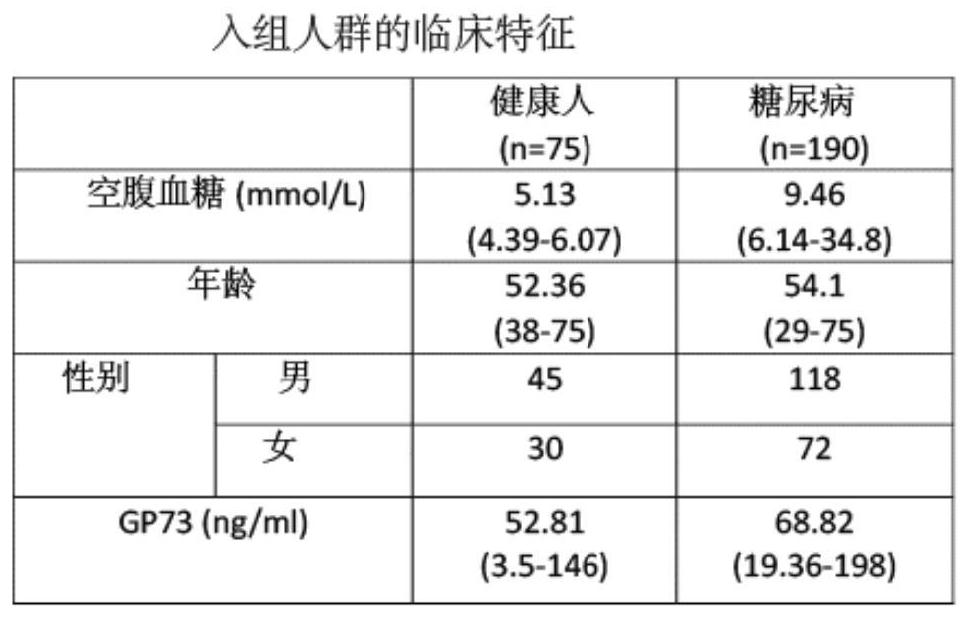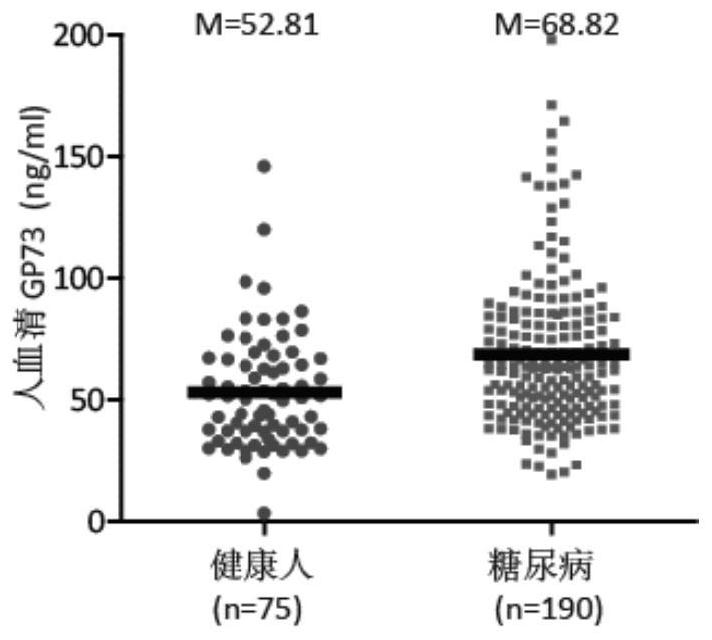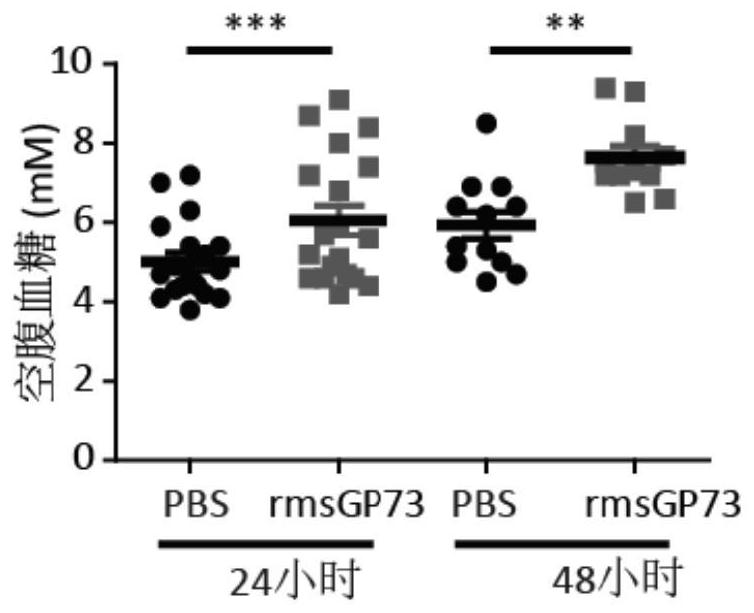Application of GP73 inhibitor in preparation of medicine for treating diabetes
A diabetes and inhibitor technology, applied in the application field of medicine, can solve the problems such as the unclear biological function of GP73, achieve the effect of enhancing blood sugar raising function and gluconeogenesis function, and prolonging the half-life
- Summary
- Abstract
- Description
- Claims
- Application Information
AI Technical Summary
Problems solved by technology
Method used
Image
Examples
Embodiment 1
[0111] Example 1. The level of soluble GP73 in the serum of diabetic population was significantly higher than that of healthy physical examination population
[0112] Experimental method: In order to compare whether the level of soluble GP73 in serum is different between diabetics and healthy people, we conducted 75 cases of healthy people who underwent physical examination in multiple physical examination centers and 190 cases of diabetic patients diagnosed as diabetes by the Department of Endocrinology. The level of serum soluble GP73 was detected after overnight fasting. These enrolled populations were matched for sex and age, and their distribution was not significantly different between healthy and diabetic populations (such as Figure 1A shown).
[0113] Experimental results: in healthy people, the average serum concentration of soluble GP73 is 52.81ng / ml (3.5-146ng / ml); in diabetic people, the average serum concentration of soluble GP73 is 68.82ng / ml (19.36-198ng / ml), ...
Embodiment 2
[0114] Example 2. Recombinant soluble GP73 regulates glucose metabolism
[0115] Experimental method: Firstly, GP73 protein was expressed and purified by HEK293 cells, a mammalian cell expression system, to obtain genetically recombinant mouse soluble GP73 protein (rmsGP73) (NCBI Reference Sequence: NP_001030294.1). This protein lacks the 1-55 amino acids of GP73, and is the main form of soluble GP73 in blood (the recombinant soluble GP73 proteins used in the mouse experiments involved in the embodiments of the present invention are all recombinant mouse soluble GP73 proteins, referred to as rmsGP73). After injecting C57BL / 6N mice (experimental group and PBS control group, 10 mice in each group) through the tail vein with 300ng / mouse rmsGP73 and PBS, we detected the expression of mice 24 hours and 48 hours after injection. Fasting blood glucose (glucose meter and blood glucose test strips were purchased from Roche), and intraperitoneal glucose tolerance (IPGTT), pyruvate tole...
Embodiment 3
[0117] Example 3. Recombinant soluble GP73 accumulates in mouse liver and kidney
[0118] Experimental method: According to the detection method or the fifth part of the experimental method, the fluorescent dye Cy7 control group and the Cy7-labeled rmsGP73 protein (rmsGP73-Cy7) experimental group were injected intravenously into the mice for fluorescence distribution and fluorescence intensity detection.
[0119] Experimental results: In vivo imaging of mice showed that compared with the Cy7 control group, rmsGP73-Cy7 mainly accumulated in the liver and kidney (such as Figure 3A). After taking its organs, it was found that compared with the Cy7 control group, the fluorescence intensity of rmsGP73-Cy7 was the strongest in the liver and kidney (such as Figure 3B ). The fluorescence intensity of each organ of the mouse was analyzed and processed, and it was found that the fluorescence intensity of the liver, kidney, and spleen of rmsGP73-Cy7 was significantly higher than that...
PUM
 Login to View More
Login to View More Abstract
Description
Claims
Application Information
 Login to View More
Login to View More - R&D
- Intellectual Property
- Life Sciences
- Materials
- Tech Scout
- Unparalleled Data Quality
- Higher Quality Content
- 60% Fewer Hallucinations
Browse by: Latest US Patents, China's latest patents, Technical Efficacy Thesaurus, Application Domain, Technology Topic, Popular Technical Reports.
© 2025 PatSnap. All rights reserved.Legal|Privacy policy|Modern Slavery Act Transparency Statement|Sitemap|About US| Contact US: help@patsnap.com



